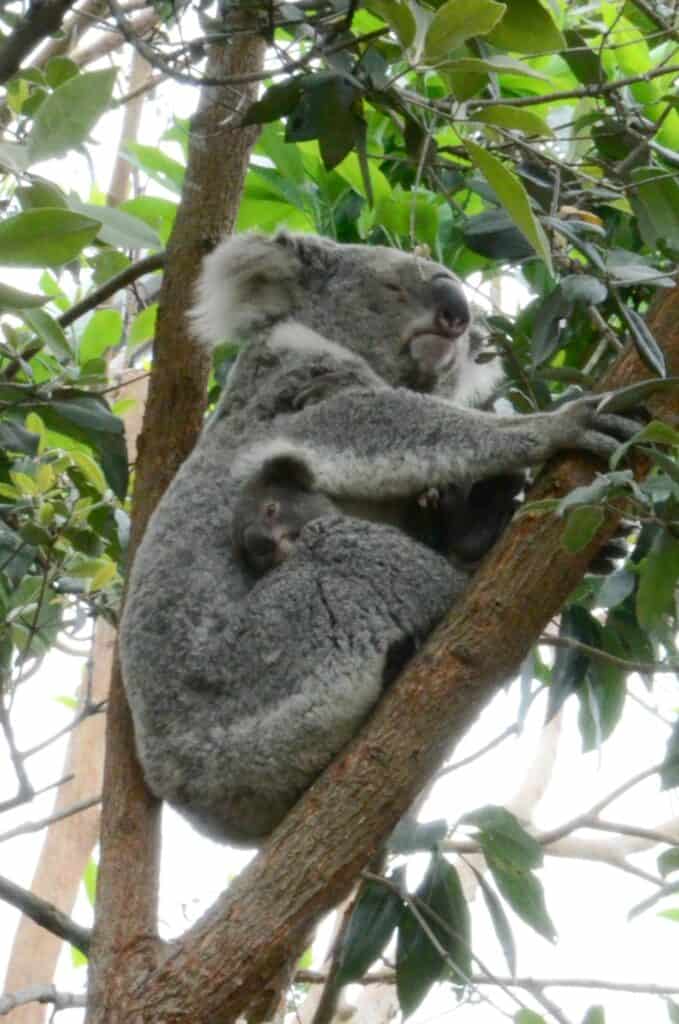Have you ever wondered what the top 10 lazy animals in the world were?
Well, we have, so without further adieu, here is our list of the laziest inhabitants of the animal kingdom! Some of these animals are spending a lot of time doing nothing. Still, it is exciting to see why they are doing it.
Some animals take a lot of time for their metabolism or burn a lot of energy, which they need to regain while resting. For most, when not all of these animals, there is a reason for them being “lazy.”
Look at the list we have created or hop to every animal.
Key Points
| Animal | Habitat and Characteristics | Unique Behavior/Feature |
|---|---|---|
| 1. Sloth | – Found in tropical rainforests of South and Central America – Hangs upside down in trees | Sluggish movement and low-energy lifestyle |
| 2. Panda | – Primarily in mountainous regions of southwest China – Eats bamboo exclusively | Requires a large bamboo diet daily |
| 3. Hippopotamus | – Spends most of the day in rivers and lakes – Has barrel-shaped body and eyes, ears, and nose on top of the head | Can see and breathe while submerged in water |
| 4. Koala | – Found in open forest and woodland areas with food trees – Can persist in urban areas | Reliant on specific food trees for habitat |
| 5. Opossum | – North America – Great tree climbers with sharp claws and prehensile tail | Build nests in tree holes or dens |
| 6. Python | – Predatory snake – Constricts and suffocates prey with its body | Sharp backward-pointing teeth for hunting |
| 7. Nurse Shark | – Bottom-dwelling, slow-moving – Can grow up to 14 feet long | Defensive biting if bothered by divers |
| 8. Echidna | – Monotreme egg-laying mammals – Found in Australia | Unique and adorable appearance |
| 9. Blue Tongued Lizard | – Native to large parts of Australia – Also known as the western bluetongue snail | Distinctive blue tongue and large size |
| 10. Cuckoo | – Known for laying eggs in other birds’ nests – Brood parasitism strategy | Rears offspring with ‘foster parents’ |
#1 Sloth
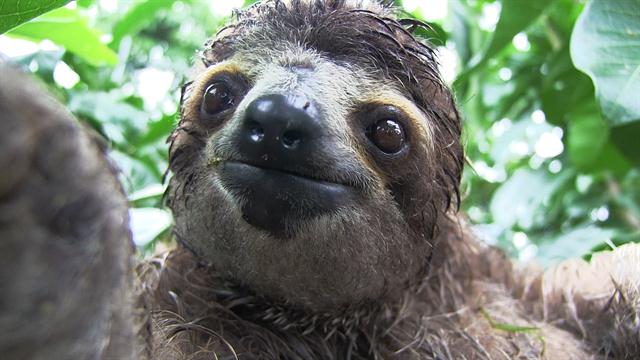
| Statistic | Value |
|---|---|
| Species | Sloth |
| Average Lifespan | 20-30 years |
| Size | 2 to 2.5 feet |
| Weight | 8 to 17 pounds |
| Diet | Herbivore (leaves) |
| Habitat | Rainforests |
| Speed | 0.24 to 0.3 mph |
| Activity Level | Mostly nocturnal |
Sloths are a group of arboreal Neotropical xenarthran mammals, constituting the suborder Folivora.
Noted for their slow movement, they spend most of their lives hanging upside down in the trees of the tropical rainforests of South America and Central America.
One animal that you would certainly expect to see on this list.
#2 Panda

| Statistic | Value |
|---|---|
| Species | Giant Panda |
| Average Lifespan | 20-30 years |
| Size | 4.6 to 6.2 feet |
| Weight | 220 to 250 pounds |
| Diet | Bamboo, occasionally small mammals |
| Habitat | Mountainous bamboo forests |
| Conservation Status | Endangered |
The panda, with its striking black and white coat, is loved worldwide and regarded as a Chinese national treasure.
Pandas are primarily found in temperate forests high in the mountains of southwest China, where they eat bamboo almost exclusively.
Depending on their bamboo portion, they must consume anywhere from 26 to 84 pounds each day.
#3 Hippopotamus
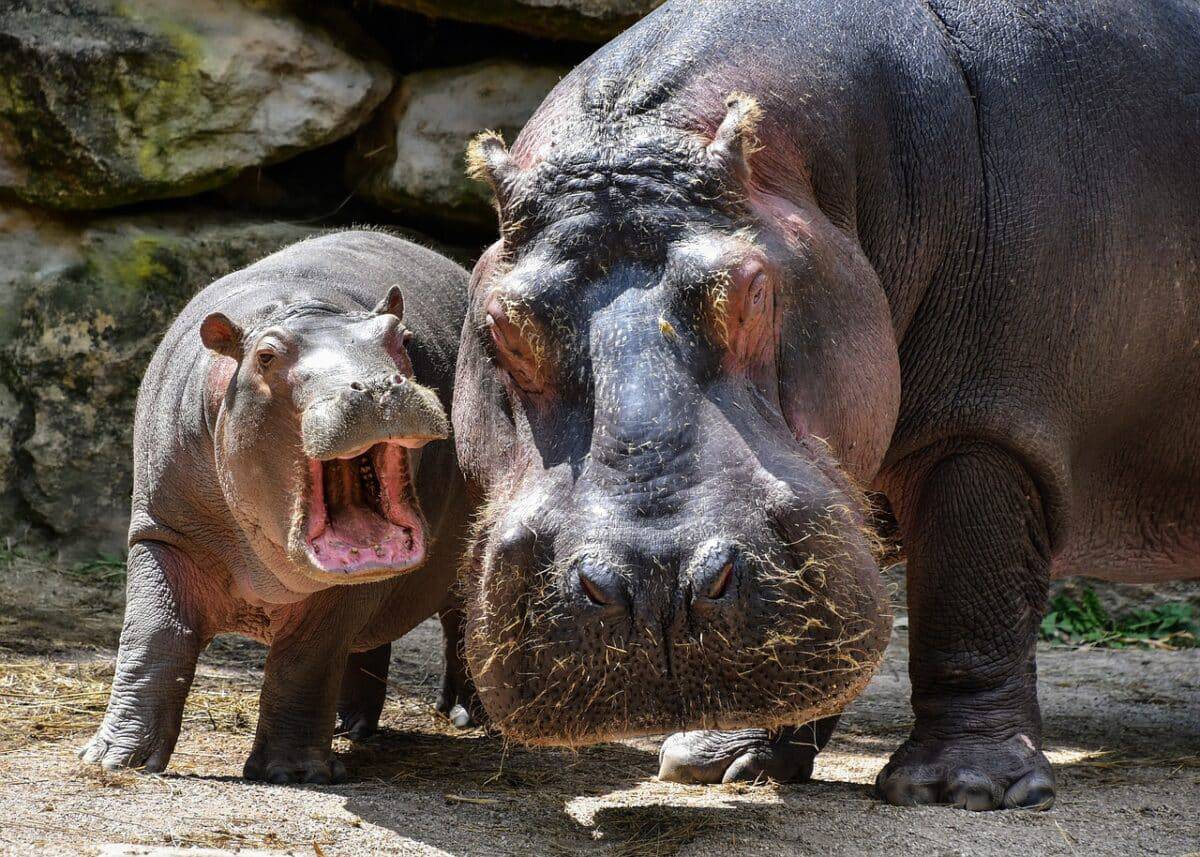
| Statistic | Value |
|---|---|
| Species | Hippopotamus amphibius |
| Average Lifespan | Up to 40-50 years |
| Size | 10 to 15 feet (length) |
| Weight | 3,000 to 4,000 pounds |
| Diet | Herbivore (mainly grass) |
| Habitat | Rivers and lakes |
| Speed (in water) | 19 mph (maximum) |
Hippos are giant semi-aquatic mammals with a barrel-shaped bodies, short legs, short tails, and a massive heads! Their skin is greyish to muddy-brown on the outside and pale pink on the inside.
Hippos spend the majority of the day in rivers and lakes. Because their eyes, nose, and ears are on their heads, they can see and breathe while submerged in water.
You can explore the world of baby hippos with our dedicated article.
#4 Koala

| Statistic | Value |
|---|---|
| Species | Koala (Phascolarctos cinereus) |
| Average Lifespan | 10-15 years |
| Size | 24 to 33 inches (length) |
| Weight | 9 to 31 pounds |
| Diet | Herbivore (eucalyptus leaves) |
| Habitat | Eucalyptus forests |
| Conservation Status | Vulnerable |
Koalas can be found in a variety of open forest and woodland groups. The presence of a small number of food trees ultimately characterizes their habitat.
Where food trees grow on more rich soils and along watercourses, koalas can be found in higher quantities.
However, they persist in urban areas and locations where their habitat has been largely removed.
#5 Opussom
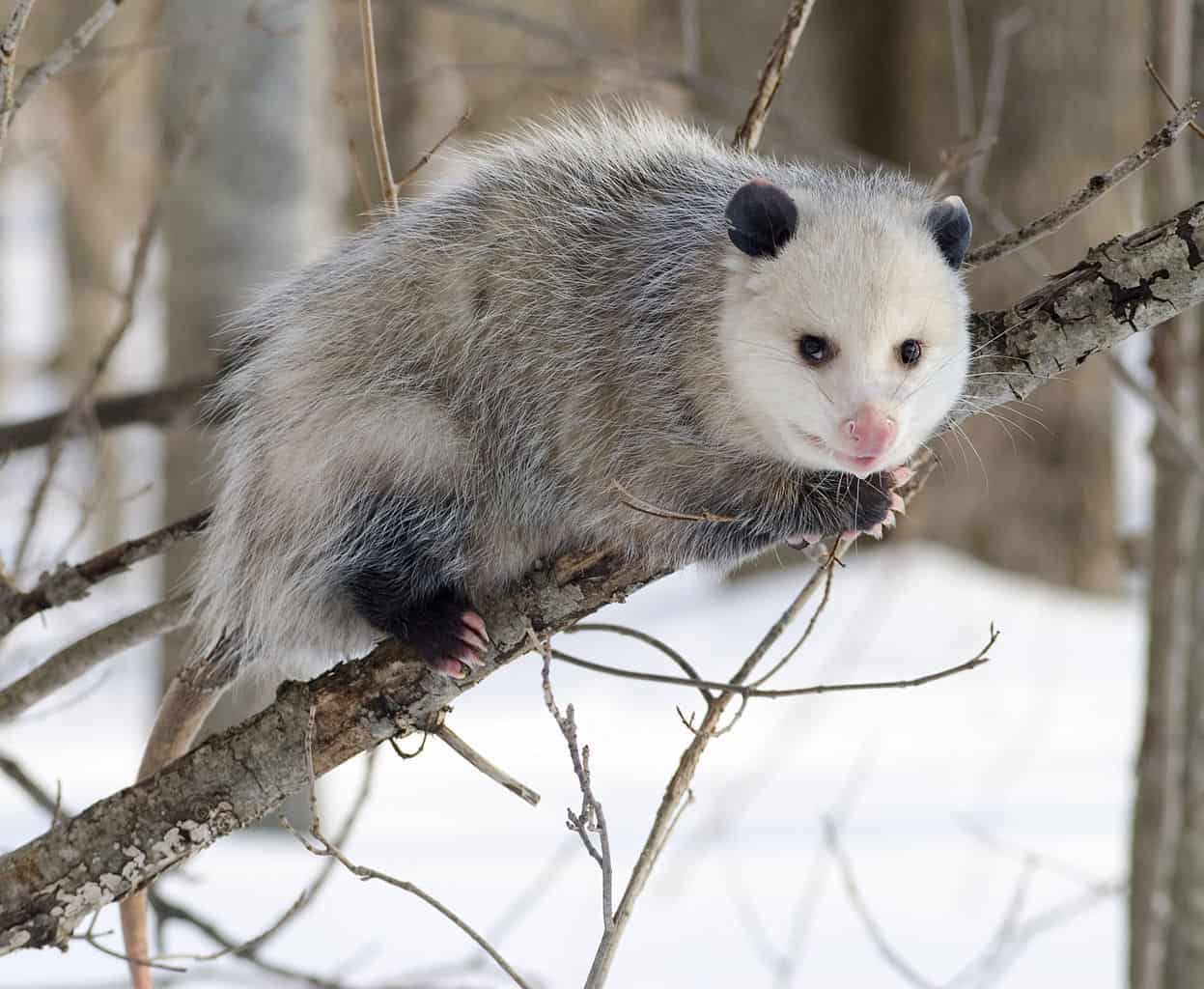
| Statistic | Value |
|---|---|
| Species | Virginia Opossum (Didelphis virginiana) |
| Average Lifespan | 2-4 years |
| Size | 10 to 14 inches (length) |
| Weight | 4 to 14 pounds |
| Diet | Omnivore (insects, fruits, small animals) |
| Habitat | Forests, urban areas |
In North America, there are several dozen different opossum species, commonly referred to as possums. The Virginia opossum, often known as the common opossum. It is the only marsupial (pouched mammal) found in the United States and Canada.
Opossums are great tree climbers and spend much time in the trees.
Sharp claws that burrow into the bark and a lengthy prehensile tail. This can be employed as an extra leg to assist them in achieving this.
Opossums build their nests in tree holes or dens dug out by other animals.
#6 Python

| Statistic | Value |
|---|---|
| Species | Ball Python (Python regius) |
| Average Lifespan | 20-30 years |
| Size | 3 to 5 feet |
| Weight | 3 to 5 pounds |
| Diet | Carnivore (small mammals, birds) |
| Habitat | Grasslands, forests |
The snake catches prey with its sharp backward-pointing teeth. Then wraps its body around it, squeezing tighter with each exhale until the animal suffocates.
Another animal I would expect to see here.
#7 Nurse Shark
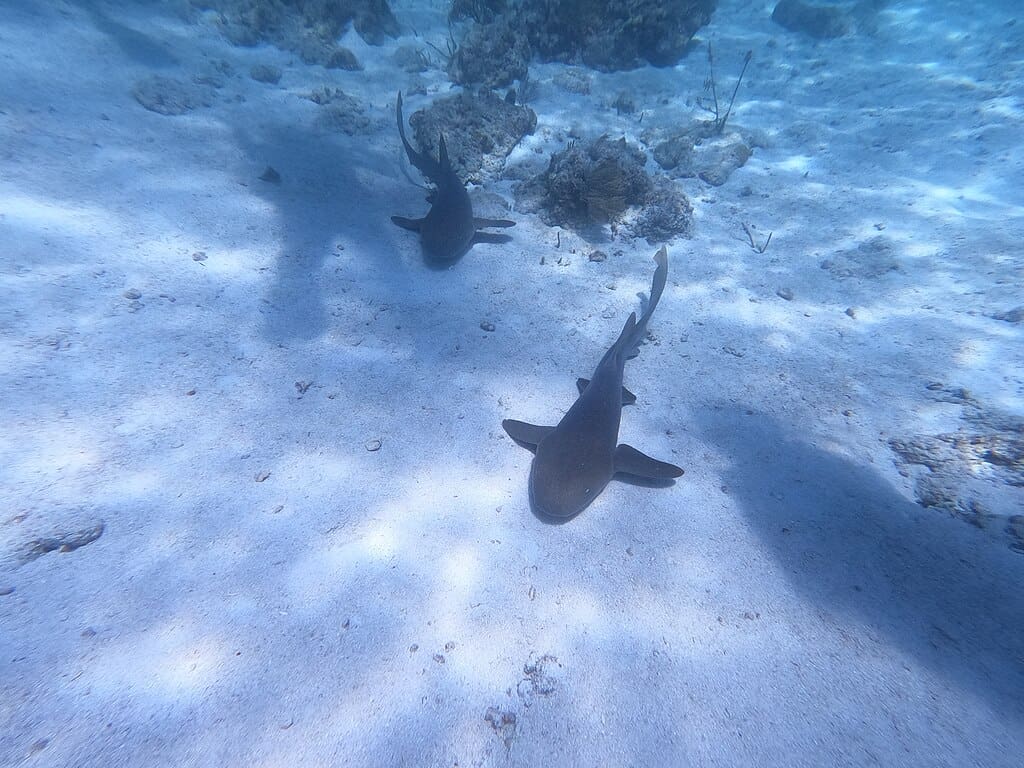
| Statistic | Value |
|---|---|
| Species | Nurse Shark (Ginglymostoma cirratum) |
| Average Lifespan | 25-35 years |
| Size | 7 to 9 feet |
| Weight | 200 to 300 pounds |
| Diet | Carnivore (fish, invertebrates) |
| Habitat | Coral reefs, shallow waters |
Nurse sharks are bottom-dwelling, slow-moving creatures that are safe for humans.
They can grow to be huge—up to 14 feet long—and have powerful jaws loaded with thousands of small, serrated teeth. If stomped on or bothered by divers who assume they’re placid, they’ll bite defensively.
#8 Echidna
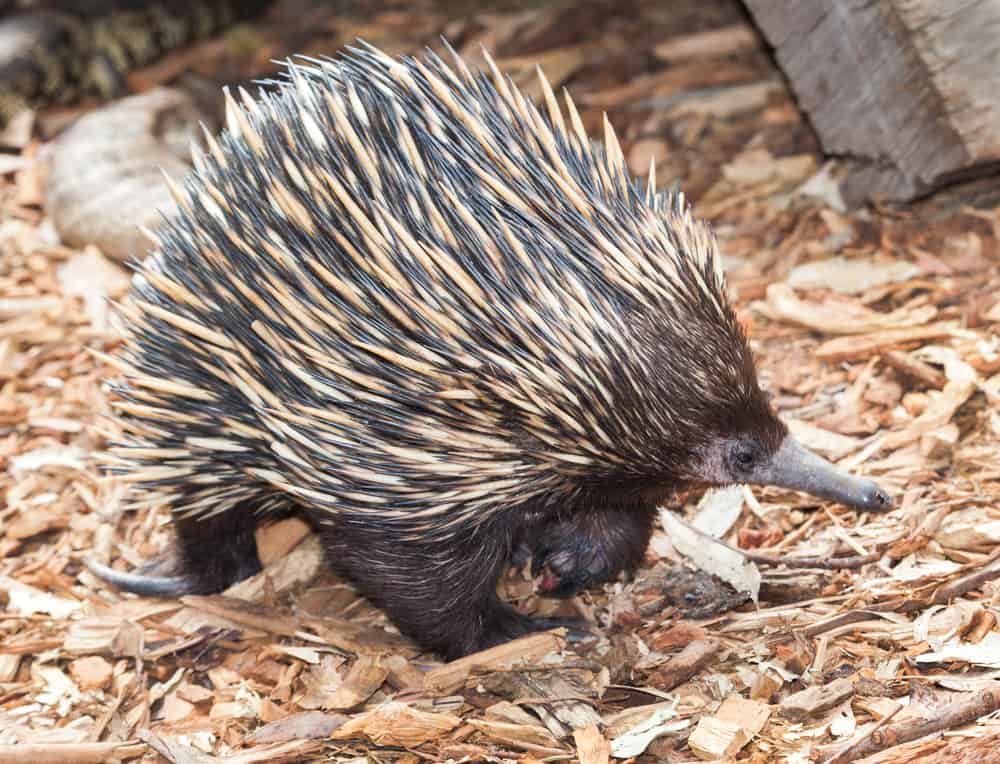
| Statistic | Value |
|---|---|
| Species | Short-beaked Echidna (Tachyglossus aculeatus) |
| Average Lifespan | 15-20 years |
| Size | 12 to 18 inches (length) |
| Weight | 4 to 9 pounds |
| Diet | Insectivore (ants, termites) |
| Habitat | Forests, grasslands |
The Echidna comprise four of the five living species in a group of egg-laying mammals known as monotremes.
They do look adorable tho!
#9 Blue tongued lizard
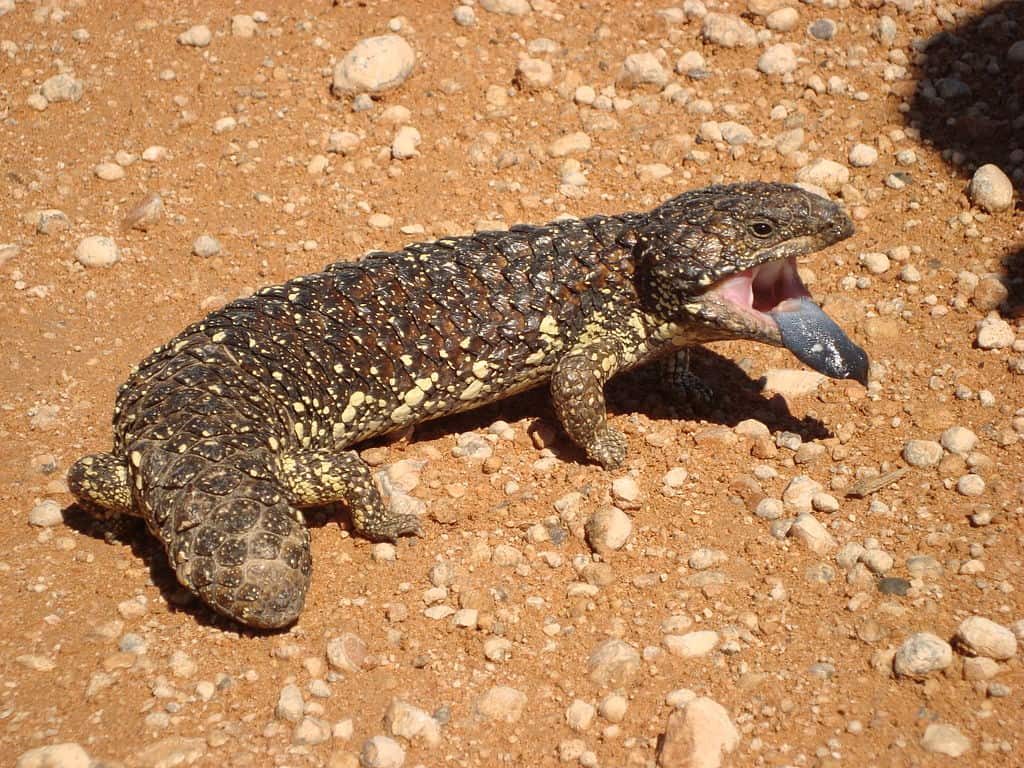
| Statistic | Value |
|---|---|
| Species | Blue-Tongued Lizard (Tiliqua scincoides) |
| Average Lifespan | 15-20 years |
| Size | 12 to 24 inches (length) |
| Weight | 0.9 to 1.5 pounds |
| Diet | Omnivore (insects, plants) |
| Habitat | Woodlands, gardens |
The bluetongue lizard, also called Tiliqua occipitalis, is a large skink that is native to large parts of Australia.
It is also known as the western bluetongue snail.
#10 Cuckoo

| Statistic | Value |
|---|---|
| Species | Various cuckoo species |
| Average Lifespan | Varies by species |
| Size | Varies by species |
| Diet | Mainly insectivorous, some are brood parasites |
| Habitat | Varies by species, often woodlands and forests |
Cuckoos are famous for laying an egg in another bird’s nest. Leaving the offspring to be raised and fed by ‘foster parents.’
This ingenious strategy enables the rearing of more baby cuckoos than would otherwise be possible.
Summary of Top 10 Lazy Animals
Thank you for reading about the Top 10 Lazy Animals. You expected to see some of them on the list, while others might have surprised you.
If you enjoyed Top 10 Laziest Animals, please take a look at our blog about the top 10 cutest animals.
We hope you enjoyed reading this article on lazy animals.
Join our Forum for free today!

- These are The 5 Largest Great White Sharks Ever Recorded - July 19, 2024
- The Surprising Benefits of Big Game Hunting - July 18, 2024
- $100k+ Hunting Experiences The Most Expensive Animals to Pursue - July 17, 2024

